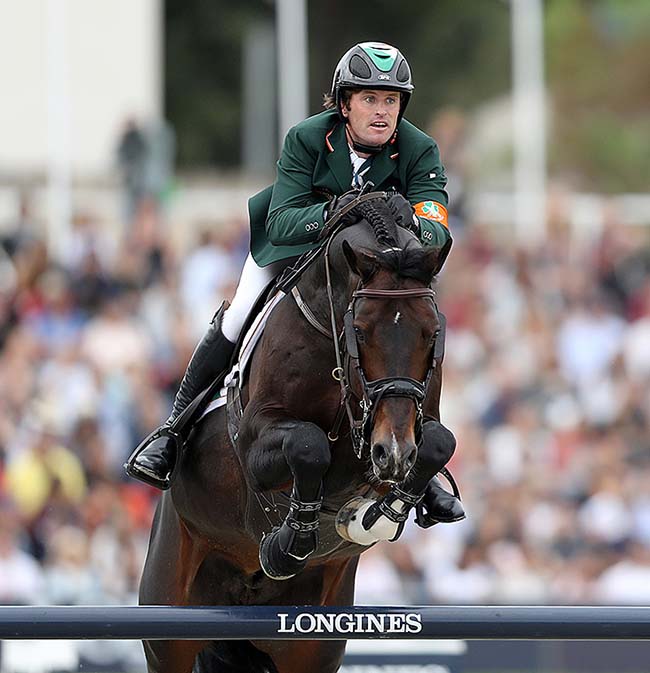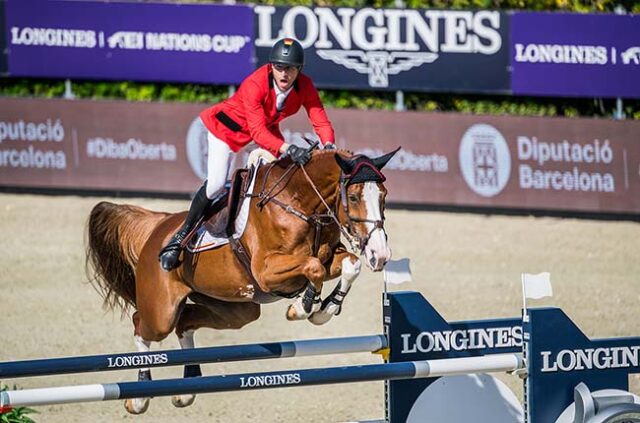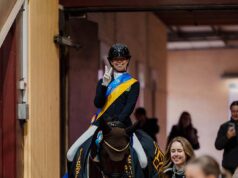By Christopher Hector
Photography: FEI/Lukasz Kowalski, FEI/Richard Julliart
It's like the search for the Holy Grail, the quest for a perfect, scientifically based method of evaluating stallions, but every attempt seems to throw up results that common sense rejects. In the 30 years I've spent looking closely at Warmblood breeding, more and more, I come to the opinion, that success is about equal parts the shrewd eye of the master breeder, and sheer blind luck, and that the really shrewd eyes focus not on the stallion but the mare...
However, one online website has brought some new and innovative ways of analysing breeding to the table and most recently have unveiled two ground-breaking rankings. They set out to rank the world's most successful breeders, looking at both the number of progeny to compete internationally and the prizemoney won by them.
I guess it is not surprising that the breeder with the most representatives by a long long margin is Paul Schockemöhle. Oh yeah, do I hear you say, he breeds a thousand foals every year, of course he will have the most. But long-time stable rider, Alois Pollman-Schweckhorst, told me it was not just weight of numbers. “He has around 1,000 mares but he knows every broodmare by name. If you say one name of a mare, he says, ‘yes, the grandmother of this mare, I bought from Hartwig Steenken, or Alwin Schockemöhle in 1970…. She is related to this horse and this horse’. That is knowledge that no one else has, and then it comes, maybe by intuition. He has the best experience, and the best success.”
In the period examined – 365 days (from 2019 to 2020), Schockemöhle's Gestüt Lewitz produced a staggering 911 competitors, with the next most successful, the Belgian studfarm Stal den Bisshop, producing 78, and the third, the French stud, SCEA Riverland, 73.
I think sometimes people get too hung up on which ranking is the 'real' one, when in truth they are just different ways of looking, different lenses, drawing our attention to a new horse, a new breeder, like SCEA Riverland.

Elevage de Riverland
As usual, behind every good horse there's a great story, and so it is with Elevage de Riverland. The stud was established in 1996 by Mickaël Varliaud when he was just 17 years old. Mickaël’s father, who owned a food company, liked to encourage his son, so he bought him the farm, but it was up to the youngster to do the rest, starting from scratch, transforming it into a stud, step by step, largely by himself. As a young professional rider, Mickaël did not have the money to buy ready-made horses, so he started to breed his own.
As a child he had ridden ponies on his uncle's farm and as he grew up started a couple of horses each year on the national young horse circuit before he arrived at Riverland – eponymously named for the little rivers that criss-cross the farm. It is in the rich animal breeding area of Charente Limousine (to the northeast of Bordeaux), and is home to cattle, sheep, and, of course, horses.
Currently Riverland produces between 60 and 80 foals per year. Right from the start Mickaël focused only on top motherlines, preferably mares with a lot of blood, and each year only the best were selected and kept.
One of the mare lines is that of Quidam de Revel, with the stud having his half sister Tosca de Revel (Kissovo x Dirka) and full sister, Razzia de Revel (Jalisco B - Dirka x Nankin). Tosca produced Jalis de Riverland (Bleu Blanc Rouge) who jumped 1m60 with Roger-Yves Bost. Mickaël then bought Jalis’s full sister, Isis Rouge, who is the dam of Presence de Riverland (Kannan) who is jumping 1m35 at the age of seven, and Hold Up Riverland (L'Arc de Triomphe), second in the French three-year old-championship and now sold to Germany.
Quidam’s full-sister, Razzia, has produced Stella de Riverland (Cornet Obolensky) a 1m60 competitor with Juliette Faligot and second in the CSI4* at St Lo, as well as the full-brother, Quatro de Riverland, a stallion at Riverland. Razzia is also the dam of Missrazzia de Kerser (Chapman Rouge) who is the mother of Delvis de Riverland (Elvis ter Putte) who placed in the four-, five-, and six-year-old French finals, and is now competing in seven-year-old classes with Timothée Anciaume... To read the complete article you need to be a subscriber
CLICK HERE TO SUBSCRIBE TO BREEDING NEWS
SUBSCRIBERS CAN READ THE COMPLETE ARTICLE BY LOGGING IN AND RETURNING TO THIS PAGE




